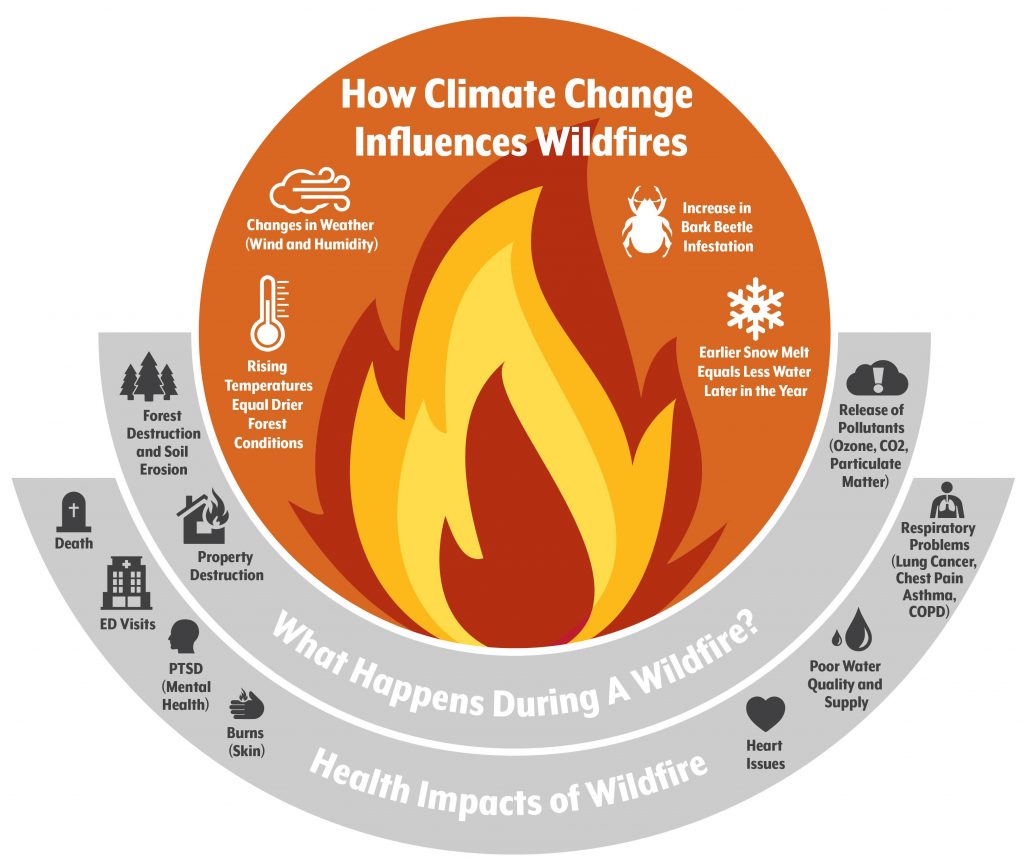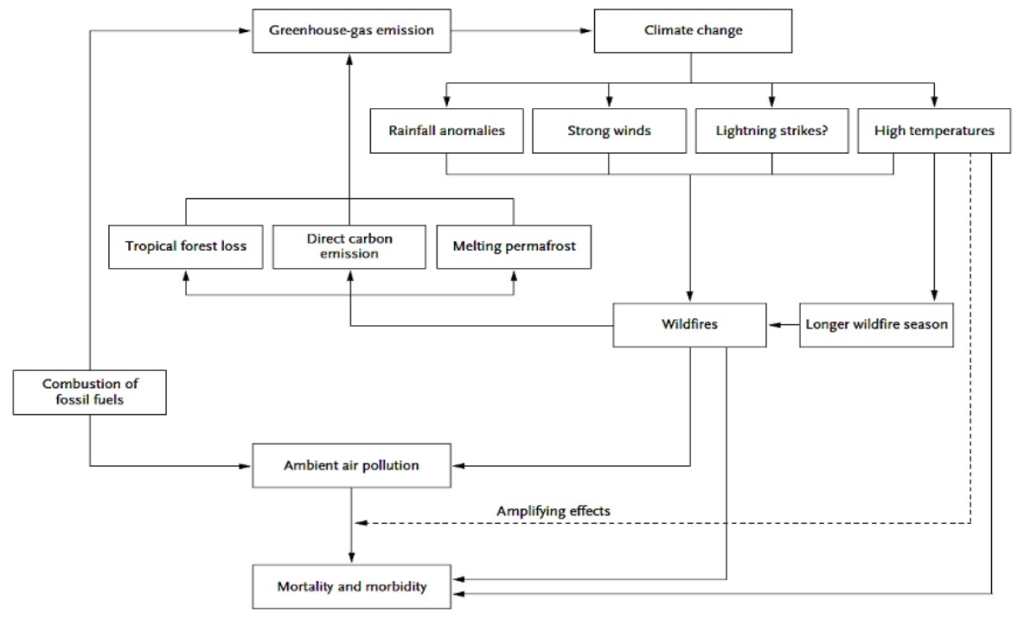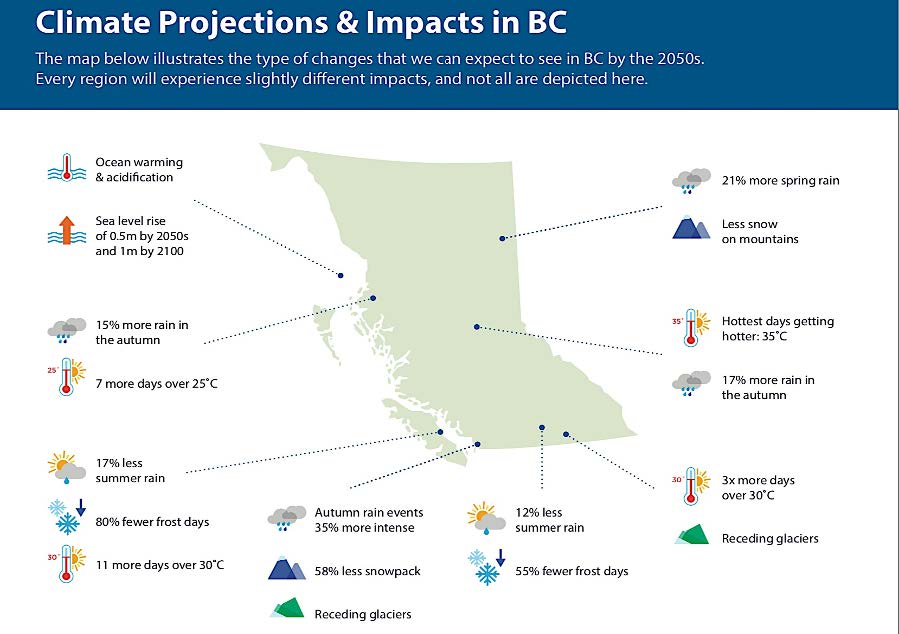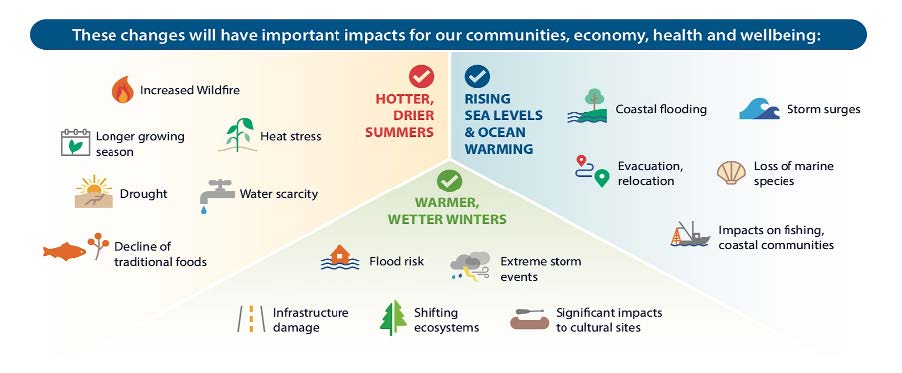Climate Change and Wildfires
It is well recognized that with a warming climate the magnitude and frequency of wildfires increases significantly, especially in areas that experience drier than normal conditions, less precipitation, and high winds. This will directly affect how often and how severe wildfires will be, especially when climate change and climate variability can accelerate the behaviour and magnitude of these events. In particular, climate change and climate variability underline how a change in the state of the climate – one that is identifiable by shifts in mean of climate properties, such as temperature and precipitation, can persist over a long period of time (i.e. usually 30 years or longer). Moreover, climate variability points to the naturally occurring processes over which humans have no control (i.e. solar output, ocean currents, volcanic activity). Notably, with the accelerated warming of our planet we can expect to see more fires in a vast amount of boreal forests in Canada and around the world, with detrimental impacts on biodiversity and human livelihood. [1] [2]
Canada is home to roughly 9% of the world’s entire forests. Since the 1990s, wildland fires have accounted for 2.5 million hectares burnt each year. In the last decade alone, Canada spent between $800 million to $1.5 billion per year on efforts to suppress fires. Markedly, the current and ongoing fire-prone conditions across Canada are predicted to lead to the doubling of how much area is burned by 2100, which is of grave concern looking forward.20 Wildland fires in Canada take place in forests, shrub lands, as well as grasslands. It is important to outline that a small percentage of wildfires are prescribed as a result of having been authorized by forest managers with the aim of maintaining healthy ecosystems. However, the majority of wildfires that become uncontrolled are either due to lightning (natural causes) or due to human carelessness. [3] [4]
The impacts seen from climate change on forests across Canada will be both gradual and sudden in nature. From alterations in growth patterns, to distribution of trees in the face of calamities, it is worth noting the interconnectedness between how forests will respond to the complex effects caused by climate change. [5] [6]
The Natural Resources of Canada outlines that the most visible impacts from climate change on forests include: infestation by the mountain pine beetle in British Columbia (BC), higher fire activity in western boreal forest, and higher aspen dieback in the Prairies; in addition, we have seen earlier arrival of spring and longer summers which in turn directly impact these ecosystems. We are called upon to understand how the “forest management activities such as harvesting, tree planting, and efforts to fight forest fires and insects have an impact on the forest carbon balance”. [7] [8]
We ought to consider how the ecosystems in these habitats will be impacted following wildfires. When forests suffer disruption because of various species burning down from wildfires such as timber, this directly translates into devastating losses for the communities who depend upon them. Specifically, those who for economic reasons rely on forestry to make ends-meet and the Indigenous Peoples whose livelihoods have been interconnected with forests over the last hundreds of years.
Moreover, the large number of people who nowadays live in closer proximity to forests need to learn about the high risks that wildfires pose on their health, homes, businesses, and livestock. As the impacts felt will be significant, we must consider how these communities can be supported in the face of such adversity. [9] [10]
The figure below illustrates how climate change contributes to wildfire occurrence and further indicate the aftermath of these on human livelihood.


From N Engl J Med, Rongbin Xu, M.B., B.S., Pei Yu, M.B., B.S., Michael J. Abramson, , et. al. , Wildfires, Global Climate Change, and Human Health, November 26, 2020. Copyright © 2020, Massachusetts Medical Society. Reprinted with permission from the author.
The following image is a map created by the Government of BC, outlining the kind of changes we can expect in British Columbia by 2050s.


- World Health Organization (WHO). (2022). Wildfires. Retrieved from: https://www.who.int/health-topics/wildfires#tab=tab_1 ↵
- Natural Resources Canada. (2020). Climate change and fire. Retrieved from: https://www.nrcan.gc.ca/our-natural-resources/forests/wildland-fires-insectsdisturbances/climate-change-fire/13155 ↵
- Natural Resources Canada. (2020). Impacts. Retrieved from: https://www.nrcan.gc.ca/climate-change-adapting-impacts-and-reducingemissions/climate-change-impacts-forests/impacts/13095 ↵
- Natural Resources Canada. (2021). Forest fires. Retrieved from: https://www.nrcan.gc.ca/our-natural-resources/forests/wildland-fires-insectsdisturbances/forest-fires/13143 ↵
- Ibid. ↵
- Ibid. ↵
- Ibid. ↵
- Ibid. ↵
- Ibid. ↵
- Ibid. ↵
An area in which development is essentially non-existent, except for roads, railroads, power lines, and similar transportation facilities. Structures, if any, are widely scattered.
Government of British Columbia. (n.d.) Wildfire glossary. Retrieved from: https://www2.gov.bc.ca/gov/content/safety/wildfire-status/about-bcws/glossary#W
The knowledgeable and controlled application of fire to a specific area to accomplish planned resource management objectives. These fires are managed in such a way as to minimize the emission of smoke and maximize the benefits to the site.
Government of British Columbia. (n.d.) Wildfire glossary. Retrieved from: https://www2.gov.bc.ca/gov/content/safety/wildfire-status/about-bcws/glossary#P

